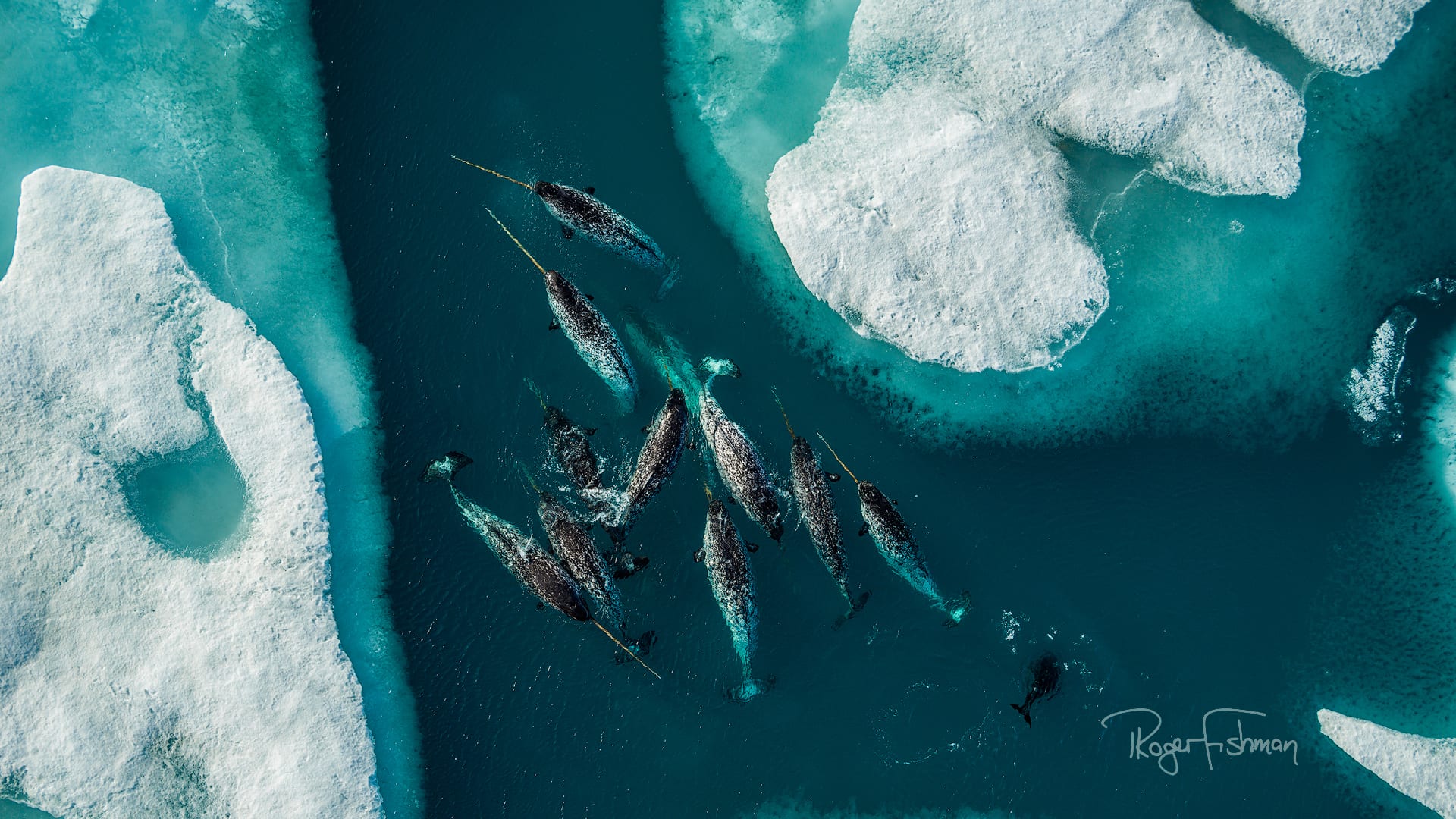Unicorns of the Arctic face a new potential threat
Unicorns of the Arctic face a new potential threat
Narwhals and other marine mammals could be vulnerable to COVID-19
By Evan Lubofsky | December 1, 2020
A pod of narwhal huddle amid the mesmerizing blues and turquoise of Petermann Glacier in North-West Greenland. (Photo by © Roger Fishman)

Unicorns of the Arctic face a new potential threat
Narwhals and other marine mammals could be vulnerable to COVID-19
By Evan Lubofsky | November 24, 2020
Narwhals may be known as the unicorns of the Arctic, but unlike their mythical counterparts, they’re not immortal. In fact, numerous environmental hazards threaten the survival of these spiral-tusked giants. The sea ice they depend upon is vanishing, and the buzzes and whistles they use to communicate are increasingly drowned out by ship activity. Now these unusual creatures may be facing a threat we’ve become all too familiar with: COVID-19.
Spending most of one’s life beneath the sea ice in the far reaches of the north might seem like a pretty sufficient quarantine. But Neel Aluru, a marine biologist at Woods Hole Oceanographic Institution (WHOI), says that’s not necessarily the case. “We know that some classes of coronaviruses already exist in marine mammals,” he says. Aluru says COVID may be a health concern for many marine animals, particularly endangered species.
Researchers do not know how prevalent the virus that causes COVID-19—SARS-CoV-2—is in seawater, nor the impacts it might have in the marine environment. But Aluru says that untreated wastewater is depositing the virus in the ocean. Wastewater led to a series of H1N1 virus infections in elephant seals off Central California in 2010, and is now bringing COVID into our oceans through terrestrial runoff and waste dumping from ships. As it does, the sewage may put an estimated 250 species of marine mammals at risk for COVID-19, according to a study published earlier this year.
The question of how susceptible narwhals are to the virus is under investigation. According to recent reports, researchers at MIT and Harvard are conducting a study in which they expose live narwhal cells to the virus. They want to see how COVID binds to proteins known as ACE2 receptors, which sit on cell surfaces and act as a gateway for infections. Narwhals have nearly the same “binding sites” as humans, which potentially puts them in a high-risk category.
“The binding sites work like a lock-and-key mechanism,” Aluru says. “When the virus binds to a receptor, it essentially locks in like a key, at which point it begins infecting the cell and multiplying.”
Despite the similar binding sites, no one knows how the immune systems of various marine mammal species might respond to the virus. “How cells respond once the receptors are activated could vary quite a bit among different species, just as they do with humans,” Aluru says. “Some people infected with COVID-19 have severe symptoms, while others do not.”
If the infections are as harmful to narwhals as they are to people, the animals could be in trouble: You can’t easily isolate an infected narwhal. They are highly social and tend to travel in pods, making their blowholes a potential vector for transmission.
Even so, the narwhals’ habitat may play in their favor. Researchers at the University of British Columbia and Cornell University recently found that coronavirus particles tend to experience “significant particle and infectivity decay rates in surface seawater.” Rebecca Gast, a WHOI biologist and expert in marine pathogens, says environmental factors such as sunlight and temperature could have an effect on the survival of the virus in seawater, with UV light and higher temperatures likely reducing its persistence.
Aluru has his own take.
“I’m not too concerned that the virus will persist long enough so that animals will be exposed before the particles are diluted,” he says.
Still, he says, it’s important for the scientific community to look at the potential health impacts of COVID on marine mammals because the virus could impact conservation efforts. “When you look at North Atlantic right whales, for example, there are only so many left,” he says. “So understanding any risks they face is important.” Plus, he says, COVID research on marine mammals could help drive policy decisions around wastewater management.
“As with any type of marine pollution, restricting how much of it is going into the ocean is key,” he says. “Wastewater plants could possibly add another treatment step in the process before water is discharged into the ocean.” Changes like these could protect narwhals and other marine mammals from COVID-19, as well as ensure that any future pandemics remain on dry land.
